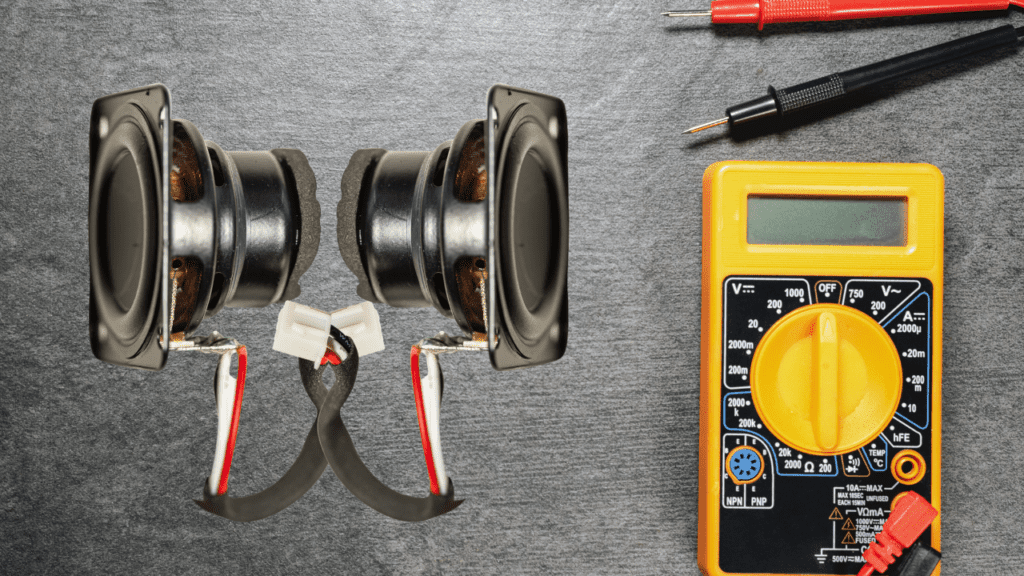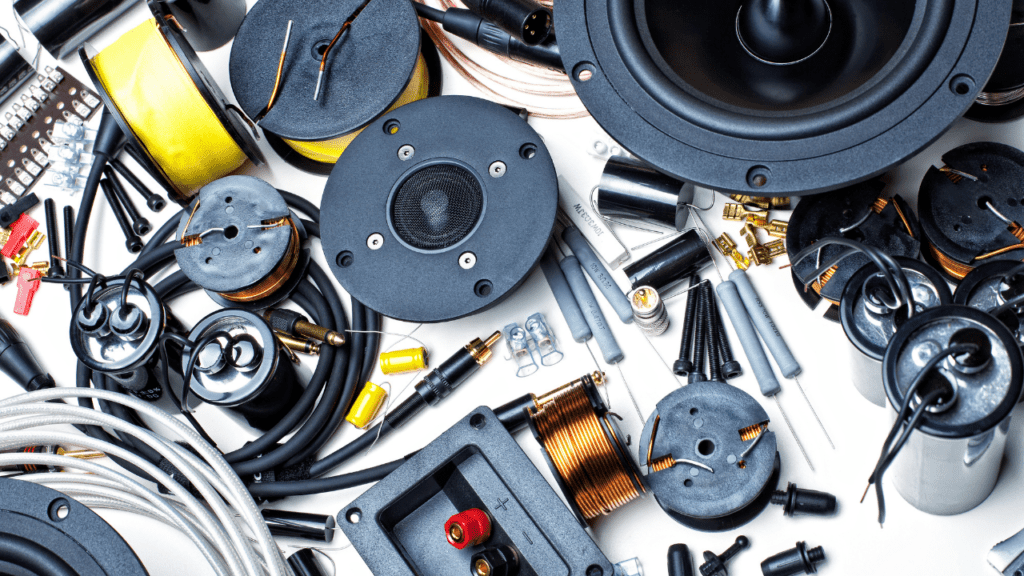
how to test the positive and negative speaker wires with a multimeter
Content
The quality of your speaker's audio output one thing you don't take for granted, especially for music lovers.
Sometimes you may need to upgrade your entire sound system, replace just the speakers, or tweak your listening experience to be more rewarding. Whichever one is, the quality of the final audio output depends on how the speaker components are installed. wired.
This article will guide you through everything you need to know about speaker polarity, including how to check if the wires are connected correctly and the consequences of poor wiring. Let's get started.
What is speaker polarity and why is it important
The polarity of your speakers is related to the negative and positive wiring of your speakers and is important to your car's sound system.
Every component in a sound system goes through an amplifier. This includes the RCA/telephone cables going to the radio head unit as well as the incoming power cables, ground cables and of course the wires coming from your speakers.
Some car audio systems are more complex because they include more components and have a more complex series of cables and wires. However, this basic setting remains the basis for the most important functions of your sound system.
Two wires come straight from your speakers and they are either positive or negative. Usually, when the speakers are used individually, there is nothing to worry about, since they work independently of the wiring.

However, when using two speakers in the same sound system (which is the normal setting), distortion or muting may occur. Also, since you need to connect your speakers to an amplifier to improve the sound quality, you may also experience distortion or interruptions in the sound. This is because the amplifier has dedicated positive and negative terminals.
How then to determine which wire is positive and which is negative? There are several ways to do this, but the best and most error-free is to use a multimeter.
How to test the positive and negative speaker wires with a multimeter
To check the polarity of your speaker wires, you connect the negative (black) and positive (red) multimeter wires to each wire. If the multimeter shows a positive result, then your wires are connected to the same polarity wires, that is, the red positive probe is connected to the positive wire, and vice versa..
Additional explanations on this subject will be given below.
A digital multimeter is a tool used to test multiple electronic components with multiple units of measure. When checking speaker wires or anything else in the car, you need to set your multimeter to DC voltage.
Connect the positive (red) and negative (black) test leads and proceed as follows.
- Disable all components
Before testing anything, make sure all speaker components are disconnected from your sound system. This is necessary to ensure your safety from electric shock.
One of the best practices is to take a picture of the sound system before disconnecting any of the components. This image is then used as a guide when reconnecting components so you don't make mistakes.
- Place the wires on the speaker wires
There are two wires coming from the speaker terminals. Often these wires are indistinguishable so you don't know which one is positive or negative.
Now you need to connect the negative and positive leads of the multimeter to each of the wires. You connect the positive red wire to one wire, connect the negative black wire to the other, and check the multimeter reading. This is where you make the decision.
- Check positive or negative reading
If the positive lead is connected to the positive wire and the negative lead is equally connected to the negative wire, the DMM will read positive.
On the other hand, if the positive lead is connected to the negative wire and the negative lead is connected to the positive wire, the multimeter will show a negative reading.
Either way, you know which wire is positive and which is negative. Then you tag them appropriately so that you want to connect with them next time.
When placing wires on wires, using alligator clips simplifies the whole process. Tape is also useful for marking wires.
- Reconnect the components to the audio system
After appropriately labeling the wires as positive and negative, you reconnect all speaker components to the audio system. The photo you previously took might be helpful here.
As mentioned earlier, there are other ways to test the positive and negative wires of your speakers.
Battery polarity check
Speaker wires can be checked by simply using a low voltage battery. This is where you mark the positive and negative points on the battery you want to use and connect the wires from the speakers to each one.

If the speaker cone sticks out, the positive and negative wires are connected correctly. If the cone is pressed in, then the wires are mixed up.
Either way, you also know which wire or terminal is positive or negative. If you don't understand, this video will help shed some light.
Checking with color codes
Another way to determine speaker polarity is to use the appropriate wire color coding.
The positive wire is usually colored red and the negative wire is usually black. However, this is not always the case as they can be mixed up or simply covered in the same color. Check the user manual if this is a new speaker.
This method is not always effective.
Conclusion
Determining the polarity of your speaker wires is not a tough nut to crack. You simply check the color codes and if there are none, you check the movement of the speaker cones with a battery or the readings with a multimeter.
Whichever method you use, proper connection ensures the best sound quality you can get from your sound system.
F.A.Q.
How do you know which speaker wire is positive and which is negative?
To find out which speaker wire is positive and which is negative, you either use color codes or use a multimeter to check polarity. A positive multimeter reading means that the leads are connected to the appropriate wires. That is, the negative black probe is connected to the speaker's negative wire and vice versa.
How to know if speaker polarity is correct?
To determine if the polarity of a speaker is correct, you connect the multimeter wires to the two terminals of the speaker and wait for the reading. A positive value means the speaker polarity is correct.
How do I know if my speakers are connected backwards?
To find out if your speaker is connected backwards, you connect a multimeter to each wire from the speaker terminals. A negative reading on the multimeter means that the speakers are connected in reverse.
What do the A and B on the speakers mean?
When using A/V receivers, Speakers A and B serve as different audio output channels with different sets of speakers connected to them. You are either playing through the speakers on channel A, or playing through the speakers on channel B, or playing through both channels.
How do you know which speaker is left and which is right?
To determine which speaker is left or right, it's best to do a sound test. You play the test sound through the speakers and listen to where the appropriate audio outputs come from.

